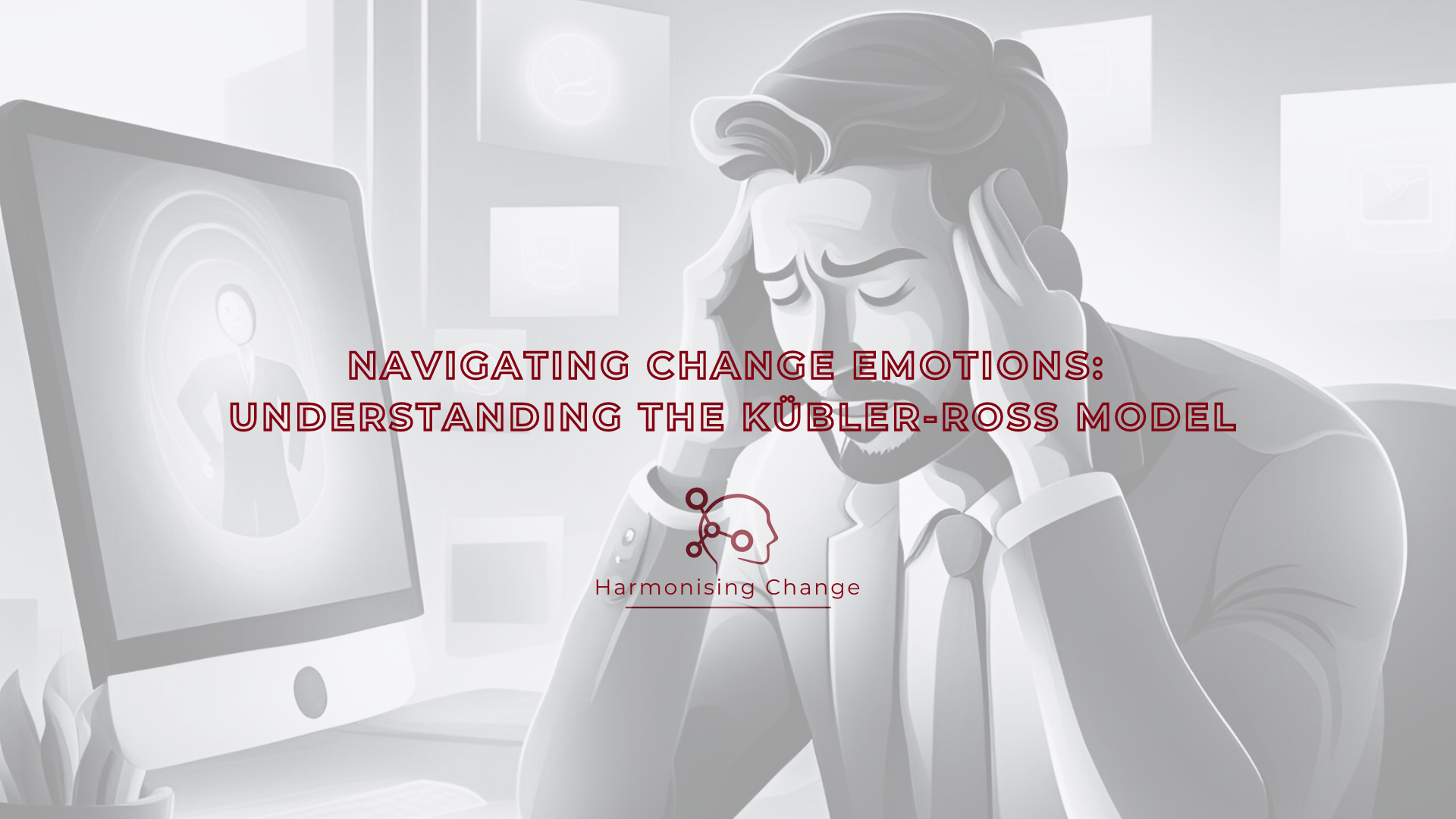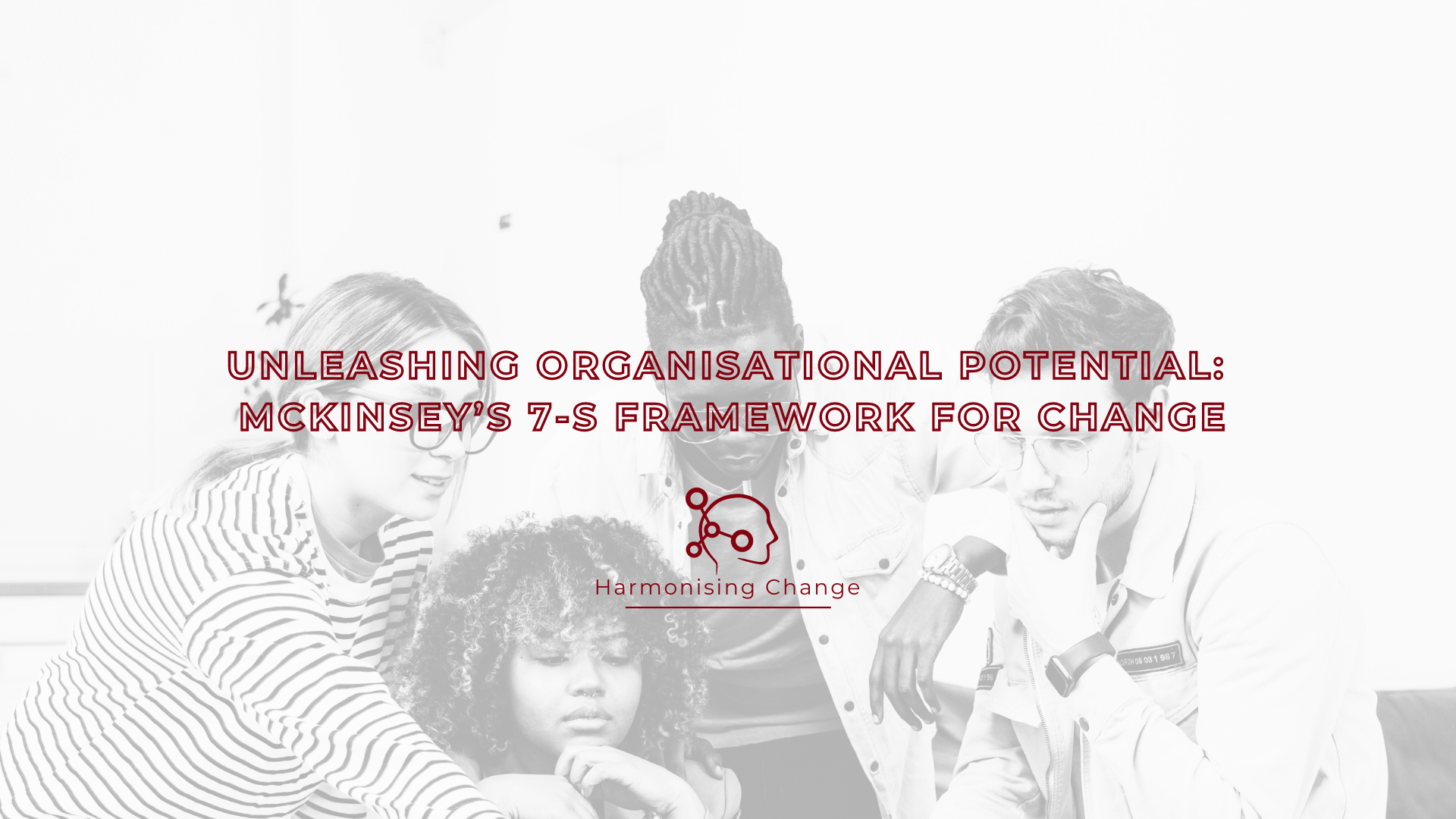
Navigating Change Emotions: Understanding the Kübler-Ross Model
Despite its constant presence, many individuals and organisations struggle to navigate the emotional landscape that accompanies significant change. Enter Elisabeth Kübler-Ross, a pioneering psychiatrist whose work in the field of grief and change has revolutionised our understanding of emotional responses to life-altering events.
Kübler-Ross’s most notable contribution, The Kübler-Ross Model, outlines the emotional stages individuals typically experience during periods of significant change. Originally developed to describe the grieving process, this model has since been widely applied to various forms of change, including organisational transformations.
In this blog post, we’ll explore each stage of the Kübler-Ross Model: Shock, Anger, Bargaining, Depression, and Acceptance. We’ll delve into the characteristics of each phase, discuss strategies for leaders to support their teams, and share real-world examples of organisations successfully navigating these emotional waters.
Shock: The Initial Impact
Understanding Shock
The first reaction to unexpected or unsettling news is often shock. Whether facing a restructuring, a leadership change, or an entirely new direction for the company, individuals may experience disbelief or denial. Productivity can dip, and people may exhibit confusion or an inability to process the information.
The Shock stage represents the initial reaction to change. It’s characterised by disbelief, confusion, and often a temporary paralysis in decision-making and productivity. During this phase, individuals may:
- Experience difficulty processing information
- Feel overwhelmed or numb
- Struggle to focus on day-to-day tasks
- Exhibit signs of stress or anxiety
Leaders play a crucial role in helping their teams navigate the shock phase. Here are some strategies to consider:
- Provide clear, honest communication about the change
- Offer emotional support and resources (e.g., counselling services)
- Allow time for individuals to process the information
- Create safe spaces for questions and concerns
Real-World Example
Microsoft’s transition to a cloud-based business model under CEO Satya Nadella’s leadership exemplifies effective management of the shock stage. By articulating a compelling vision for the future and investing in extensive training and support for employees, Microsoft successfully mitigated the initial shock and set the stage for a smoother transition.
Anger: Frustration and Resistance
Following the initial shock, emotions often shift to anger. Individuals may feel frustrated, resentful, or resistant as they confront the change. It is a natural emotional reaction to perceived loss of control or disruption to familiar routines.
Anger during organisational change often arises from a sense of injustice or frustration over being forced to adapt. Employees might voice their concerns through increased resistance or even confrontational behaviour.
This phase is characterised by:
- Feelings of frustration and resentment
- Resistance to new ideas or processes
- Increased irritability or confrontational behaviour
- Questioning of leadership decisions
Leaders must acknowledge this stage as part of the change process. Rather than dismissing or avoiding anger, it’s crucial to provide opportunities for individuals to express their frustrations.
This can be done constructively in a number of ways:
- Acknowledging and validating emotions
- Providing outlets for expression (e.g., feedback sessions)
- Maintaining open lines of communication
- Focusing on problem-solving rather than blame
Case Study
During IBM’s transformation from a hardware company to a services and cloud computing leader, the company faced significant employee resistance. By implementing transparent communication strategies and involving employees in the change process, IBM was able to address anger constructively and build support for the new direction.
Bargaining: Seeking Alternatives
Bargaining typically follows anger as individuals seek ways to regain a sense of control. They may try to negotiate compromises or suggest alternative solutions in an attempt to delay or mitigate the full impact of change.
During this stage, employees may feel the need to strike deals—offering ideas that could alter the course of change. It’s a reflection of their desire to find a middle ground or reduce the impact on their role.
In the Bargaining stage, individuals attempt to regain a sense of control by:
- Proposing alternatives or compromises
- Seeking to delay or modify aspects of the change
- Trying to negotiate better terms or conditions
- Looking for ways to maintain elements of the status quo
Leaders should actively listen to employees’ concerns but maintain a firm stance on the overall vision of the change. Encouraging collaborative discussions where employees feel heard, but aligning these talks with the organisation’s goals, can foster trust and teamwork.
Organisations can effectively manage this stage by:
- Listening actively to employee concerns and suggestions
- Involving team members in decision-making where possible
- Clearly communicating non-negotiable aspects of the change
- Finding ways to incorporate valuable employee input
Practical Example
During Pixar’s acquisition by Disney, leadership effectively managed the bargaining stage by maintaining open communication, addressing employee concerns, and preserving the studio’s creative autonomy. This collaborative approach led to a successful integration while retaining Pixar’s unique culture.
Depression: Facing Reality
As employees realise the full implications of change, they may experience depression. This stage is characterised by feelings of sadness, demotivation, and even hopelessness. Employees might struggle with decreased productivity or absenteeism as they come to terms with the new reality.
Depression during change can manifest as guilt, withdrawal, or a profound sense of loss. If left unaddressed, it can impact morale and the overall health of the workplace.
The Depression stage is often the most challenging, characterised by:
- Decreased motivation and productivity
- Feelings of helplessness or hopelessness
- Withdrawal from colleagues or work activities
- Increased absenteeism or presenteeism
It’s essential for leaders to offer emotional support and create a psychologically safe environment.
Providing mental health resources, fostering open discussions about feelings, and offering flexible work arrangements can help employees cope. Leaders should pay attention to signs of distress and proactively offer assistance
Leaders can help their teams navigate this difficult stage by:
- Providing mental health resources and support
- Offering flexible work arrangements when possible
- Maintaining regular check-ins and open communication
- Celebrating small wins and progress
Organisational Success Story
Salesforce’s “Mindfulness Matters” program serves as an exemplary initiative for supporting employees through challenging times. The program provides access to mental health resources, training sessions on mindfulness and stress reduction techniques, and designated mental health days, demonstrating the company’s commitment to employee well-being during periods of change.
Acceptance: Embracing the New Normal
Acceptance is the final stage in the Kübler-Ross Model, where individuals come to terms with the change and begin to embrace it. In this phase, employees often feel more optimistic, engaged, and ready to refocus their energy on the future.
Increased collaboration, proactive problem-solving, and a shift toward a positive outlook are key indicators that individuals have accepted the change.
The Acceptance stage marks a turning point, where individuals begin to:
- Engage actively with new processes or structures
- Demonstrate a more positive outlook
- Show increased productivity and innovation
- Collaborate more effectively with colleagues
Leaders should celebrate achievements, recognise adaptability, and share success stories of how the organisation is thriving post-change. Reinforcing positive behaviour and fostering a culture of continuous improvement will help solidify acceptance.
Leaders can foster and reinforce acceptance by:
- Recognizing and rewarding adaptability
- Providing opportunities for skill development
- Encouraging knowledge sharing and best practices
- Continuing to communicate the vision and progress
Success Story
Adobe’s shift from a traditional software sales model to a cloud-based subscription service demonstrates successful navigation through to acceptance. By investing in employee training, fostering a culture of innovation, and consistently communicating the benefits of the new model, Adobe achieved widespread acceptance and success in its new business approach.
Applying Kübler-Ross in Change Leadership
The Kübler-Ross Model serves as a powerful tool for change leadership. Leaders can anticipate and address emotional responses throughout the stages of change. Empathy, communication, and flexibility are critical as individuals navigate the transition. Recognising that these stages are not always linear, and that individuals may experience them at different paces, allows leaders to be more responsive and effective in their approach.
It’s important to remember that the stages of the Kübler-Ross Model are not rigid or sequential. Individuals may revisit stages, experience emotions out of order, or skip stages altogether. The model should be viewed as a framework to guide understanding rather than a strict timeline.
The Kübler-Ross Model provides invaluable insights into the emotional journey of change. By understanding and addressing each stage – Shock, Anger, Bargaining, Depression, and Acceptance – leaders can guide their organisations through transitions with greater empathy, effectiveness, and resilience.
As you navigate change within your own organisation, remember that each stage presents both challenges and opportunities for growth. By fostering open communication, providing robust support, and celebrating progress, you can help your team not just weather change, but thrive in it.
Contact Harmonising Change here.



